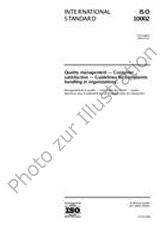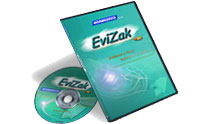Wir benötigen Ihre Einwilligung zur Verwendung der einzelnen Daten, damit Sie unter anderem Informationen zu Ihren Interessen einsehen können. Klicken Sie auf "OK", um Ihre Zustimmung zu erteilen.

ISO/IEC 8208-ed.4.0
Information technology - Data communications - X.25 Packet Layer Protocol for Data Terminal Equipment
Name übersetzen
NORM herausgegeben am 16.11.2000
Informationen über die Norm:
Bezeichnung normen: ISO/IEC 8208-ed.4.0
Ausgabedatum normen: 16.11.2000
SKU: NS-942842
Zahl der Seiten: 170
Gewicht ca.: 541 g (1.19 Pfund)
Land: Internationale technische Norm
Kategorie: Technische Normen ISO
Kategorie - ähnliche Normen:
Die Annotation des Normtextes ISO/IEC 8208-ed.4.0 :
This International Standard specifies the procedures, formats and facilities at the Packet Layer for Data Terminal Equipment (DTE) operating in conformance with ITU-T Recommendation X.25. Both Virtual Call and Permanent Virtual Circuit modes of operation are covered. The Packet Layer protocol specified herein can be used in both Open Systems Interconnection (OSI) and non-OSI environments. When used within the context of OSI, the Packet Layer protocol is encompassed in the Network Layer of the OSI Reference Model, ITU-T Rec. X.200 | ISO/IEC 7498-1. This International Standard covers DTE operation at the Packet Layer when accessing a public or private packet-switched network conforming to ITU-T Recommendation X.25 by means of a dedicated path or a circuit-switched connection. It also covers the additional Packet Layer procedures necessary for two DTEs conforming to this International Standard to communicate directly (i.e., without an intervening packet-switched network) over a dedicated path, a circuit-switched connection, or a local area network (LAN). This International Standard also covers private networks that use ITU-T Recommendation X.25 to connect to packet-switched public data networks and that may also offer an X.25 interface to a DTE (see annex A). To evaluate conformance of a particular implementation, it is necessary to have a statement of which capabilities and options have been implemented. Such a statement is called a Protocol Implementation Conformance Statement (PICS), as defined in ITU-T Rec. X.290 | ISO/IEC 9646-1. Annex B provides the PICS proforma in accordance with the relevant guidance given in ITUT Rec. X.296 | ISO/IEC 9646-7. The first edition of this International Standard was based on the 1984 CCITT Red Book text of Recommendation X.25. It also contained the necessary provisions for compatibility with the earlier 1980 CCITT Yellow Book text of Recommendation X.25. The second edition was based on the 1988 CCITT Blue Book text of Recommendation X.25. The third edition is based upon the 1993 version of X.25. This fourth edition is based on the 1996 version of X.25. Retained within this fourth edition are the necessary provisions for compatibility with the 1993, 1988, 1984 and 1980 versions of X.25. The differences between various editions of this International Standard are summarized in annex C. CCITT Recommendation X.613 (1992) | ISO/IEC 10588 : 1993, Information technology Use of X.25 Packet Layer Protocol in conjunction with X.21/X.21bis to provide the OSI connectionmode Network Service CCITT Recommendation X.614 (1992) | ISO/IEC 10732 : 1993, Information technology Use of X.25 Packet Layer Protocol to provide the OSI connection-mode Network Service over the telephone network
Empfehlungen:
EEviZak – alle Gesetze einschließlich ihrer Evidenz in einer Stelle
Bereitstellung von aktuellen Informationen über legislative Vorschriften in der Sammlung der Gesetze bis zum Jahr 1945.
Aktualisierung 2x pro Monat!
Brauchen Sie mehr Informationen? Sehen Sie sich diese Seite an.



 Cookies
Cookies
